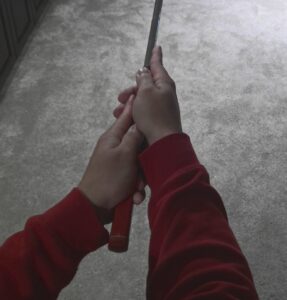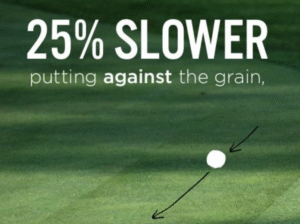Closing time I guess! Time to wrap up this putting journey with one final post! This has been such a fun and unique learning project that brought some different challenges and overall a positive experience! For this project I decided to improve my putting skills in golf, this post is a summary of what I learned, how I grew, and how technology supported my learning!

Photo by Michael-Li on Pixabay
I had no idea where I was going to go with this learning project, or really how to blog about something in general! I knew my struggle in golfing was my putting game, things like form, pace, and reading greens have always been a question for me.
Takeaways after week 1-There is a gameplan but not sure how it’s going to go!
Week 2- Back to the Basics of Putting
- This week was guided by Top Speed Golf in the video called Putting Basics
- Grip, stance, ball position, and stroke mechanics were the focus points
- I learned keeping my eyes directly over the ball helped me get a better line and overall swing to the ball.
- One of the biggest takeaways from this week was that it changed how I will be gripping the putter
- Below is pictures of how my grip from before and after. I hold the putter much lower now, almost at the bottom of the grip on the putter. Also, my index finger on both hands are pointed along the sides of the putter. I found this to allow me to have stronger control of the club when putting.


Takeaways after week 2- There was a lot to unpack on this one! Thankfully got to get comfortable with trying different grips and swing styles!
- Tempo…pace…rhythm… metronome…are we talking about music or golf?? LOL.
- As someone who loves music, it was funny finding the video How To Find Your Perfect Putting Tempo By Using A Metronome by Rhythmic Golf.
- What I learned was that you can have your own tempo, it’s really a personal preference! Although it is nice having a starting point if you are really having troubles.
Takeaways after week 3-Connecting music with golf was a fun way to learn and practice! I found during this week it was important to stay consistent with practicing!
Week 4-Reading The Green, The Algorithm Is Here
Week 4 had my phone listening to me! I went to search music on Sportify and it auto-populated a golf podcast! This weeks learning was from Golf Tips for Beginners on Spotify as well as a great video called How to Read Putting Greens Better with Brad Faxon
- Podcast was a unique way to learn about how to read a green
- Understand slopes and green speeds but overall go by feel
- Find a routine and stick with it! Helps stay consistent.

Takeaways after week 4- Listen and learn! A big part of putting is based of intuition and feeling. There are many factors when putting the key is to take what you know and have a good feel with what you can do with your putter!
Week 5 was a week where weather kept me off the course but yet I still found a way to practice some putting! At this point I had gone through understanding the fundamentals, now it was to practice and do some drills to get better! I’m including this video because I found it really helped with control and tempo!! Best part was that it can be done from home!
- Sharpie allows you to see what is happening when you are contacting the ball
- Coin on your putter drill is great for control and speed practice
- Last drill gets you practicing keeping your eye on the ball
Takeaways after week 5- No place like home? I was able to find some great drills that can be done right at home! these drill were inspired from Rory Mcilroy. Some great simple drills that can easily improve feeling with your putter!
Week 6-Putting Drill With Phill
- Week 6 I found another video that helped me ALOT! I knew this one was going to be great when I was that Phil Mickelson was the one giving the lesson.
- 3 foot putting drill is by far one of the best drills to work on short putts
- Allows to practice further putts if you want to work on longer putts
- The drill gets you moving around the hole for different putting lines
Takeaways after week 6- BEST FOR LAST!! Hands down the best drill I found that can improve your putting game! I think if I were to stay consistent with this drill or even incorporate it into my warm up, I will have better success in putting! I would encourage everyone to check this drill if they want to improve their putting!
TAKEAWAYS FROM LEARNING PROJECT
- Small adjustments can have a big impact- Simply changing my grip and practicing keeping my eye on the ball helped me grow consistency and control
- Tempo is different for everybody- Find a tempo that works for you! You have to be comfortable when putting!
- Find the balance- Understand slopes and wind but go with intuition and feel!
- Practice can happen anywhere- Especially in Sask. the weather can’t always be best for practicing golf, putting drills can be done at home inside!
- Patience and consistency- Two of the most important things to remember in golf! Stay calm if your struggling, stay consistent when practicing and with your routine.
THE ROLE OF TECHNOLOGY AND ONLINE RESOURCES
It was through technology and online resources that were crucial in helping me improve my putting game in golf! YouTube was a great tool for finding different videos that not only helped but were easy to follow and understand! I encourage all to utilize online resources and technology when learning something new!
FINAL THOUGHTS
This learning project taught me that if I want to become better at putting in golf, I need to focus, adapt to new learning techniques and be will to try new things! After reflecting on my journey, I do feel more confident on the greens and my overall putting skills! One thing I enjoyed about this project was also seeing the progress in my blogging skills! So not only was I making progress with putting but also in my blog posts! I hope to stay consistent and keep improving different parts of my golf game. I definitely noticed by practicing more and getting more comfortable with my putter, I feel better with my putting skills and knowledge! My biggest advice for anyone trying something new, is to break it down and find different ways you can learn and practice. It might be from a golf pro at the course or finding something online, no matter what your trying to accomplish, KEEP GOING!!
Thanks to everyone that followed along my journey and even shared a comment! Big thanks to Katia for providing this opportunity! I had so much fun practicing and improving my putting skills!

